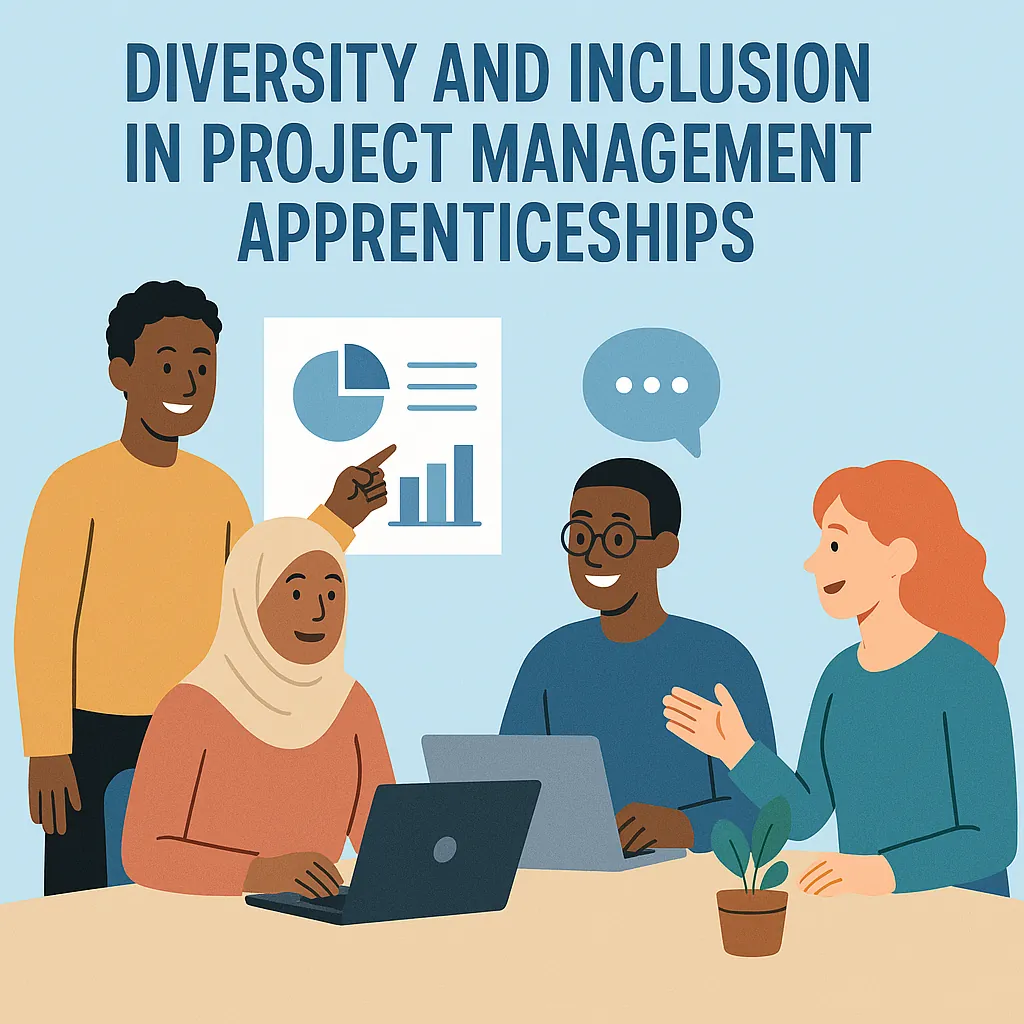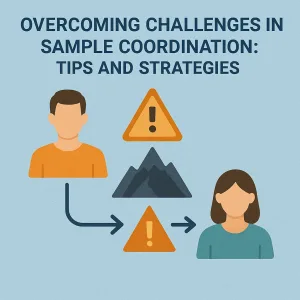Introduction
Project management apprenticeships play a crucial role in developing the next generation of leaders and professionals. These programs not only provide hands-on experience and training but also serve as a vital entry point into the project management field for many individuals. By integrating apprenticeships into their workforce development strategies, organizations can cultivate a skilled talent pool that is equipped to meet the demands of modern project management.
However, the project management industry faces significant diversity challenges. Despite the growing recognition of the importance of diversity, many organizations still struggle with gender imbalances and underrepresentation of various demographic groups within their project management teams. This lack of diversity can hinder innovation, limit perspectives, and ultimately affect project outcomes. Addressing these challenges is essential for fostering a more inclusive environment that reflects the diverse communities in which organizations operate.
To combat these issues, the concept of inclusive apprenticeship practices emerges as a powerful solution. Inclusive apprenticeship practices focus on creating equitable opportunities for all individuals, regardless of their background. This involves implementing strategies that not only attract a diverse range of candidates but also support their development throughout the apprenticeship journey. By prioritizing diversity and inclusion in project management apprenticeships, organizations can enhance their workforce, drive better project results, and contribute to a more equitable industry overall.
The Importance of Diversity in Project Management
Diversity in project management is not just a buzzword; it is a critical component that can significantly enhance the effectiveness and success of project teams. As organizations strive to foster inclusive environments, understanding the importance of diversity in project management apprenticeships becomes essential for HR professionals and industry leaders. Here are several key points that highlight why diversity is vital for successful project management.
Benefits of Diverse Teams for Innovation and Problem-Solving
- Enhanced Creativity: Diverse teams bring together individuals with different backgrounds, experiences, and perspectives. This variety fosters creativity and innovation, as team members can approach problems from multiple angles, leading to more effective solutions. Research shows that diverse teams are more likely to generate unique ideas and challenge the status quo, which is crucial in project management where adaptability is key.
- Improved Decision-Making: A study by McKinsey & Company found that companies with more diverse leadership teams are 33% more likely to outperform their peers on profitability. This is largely due to the fact that diverse teams make better decisions, as they consider a wider range of options and viewpoints, reducing the risk of groupthink.
Statistics on Diversity in Project Management
- Impact on Project Outcomes: According to a report from the Project Management Institute (PMI), projects led by diverse teams are 1.5 times more likely to succeed than those led by homogenous teams. This statistic underscores the direct correlation between diversity and project success, emphasizing the need for inclusive practices in project management apprenticeships.
- Representation in the Field: Despite the clear benefits, diversity in project management remains a challenge. A survey conducted by PMI revealed that only 30% of project managers identify as women, and even fewer belong to underrepresented ethnic groups. This lack of representation can hinder the potential for innovation and problem-solving within teams.
Understanding Inclusion in Apprenticeships
Inclusion is a critical concept that goes beyond merely having a diverse workforce. It refers to the active, intentional, and ongoing effort to ensure that diverse individuals feel welcomed, respected, supported, and valued within the workplace. Here are some key points to clarify the meaning and significance of inclusion in project management apprenticeships:
- Definition of Inclusion: Inclusion in the workplace means creating an environment where all individuals, regardless of their background, identity, or abilities, can participate fully and contribute to the organization’s success. It involves recognizing and valuing the unique perspectives and experiences that each individual brings to the table, thereby fostering a sense of belonging and engagement among all employees.
- Significance of Inclusion: The importance of inclusion in project management apprenticeships cannot be overstated. An inclusive environment enhances collaboration, innovation, and problem-solving by leveraging the diverse skills and viewpoints of all team members. This is particularly vital in project management, where teamwork and communication are essential for success. Furthermore, inclusive practices can lead to higher retention rates, improved employee satisfaction, and a stronger organizational reputation, which are crucial for attracting top talent in a competitive job market.
- Differentiating Diversity and Inclusion: While diversity refers to the presence of differences within a given setting, including race, gender, age, sexual orientation, and more, inclusion is about how those diverse individuals are integrated and valued within the organization. Diversity can be seen as a measurable metric, whereas inclusion is a qualitative experience that affects how individuals feel within the workplace. It is essential for HR professionals and industry leaders to understand that simply having a diverse workforce is not enough; they must also implement inclusive practices to ensure that all employees can thrive.
- Role of Inclusive Practices: Inclusive practices play a pivotal role in creating a supportive learning environment for apprentices in project management. These practices may include mentorship programs, training on unconscious bias, flexible work arrangements, and creating safe spaces for open dialogue. By fostering an inclusive culture, organizations can help apprentices feel empowered to share their ideas, ask questions, and seek support, which ultimately enhances their learning experience and professional development. Moreover, inclusive practices can help break down barriers that may prevent underrepresented groups from entering or advancing in the field of project management.
Strategies for Fostering Diversity and Inclusion in Apprenticeship Programs
Fostering a diverse workforce through inclusive apprenticeship practices is essential for driving innovation and enhancing team performance. Here are actionable strategies that HR professionals and industry leaders can implement to promote diversity and inclusion within their apprenticeship programs:
1. Best Practices for Recruitment Targeting Underrepresented Groups
- Inclusive Job Descriptions: Craft job descriptions that use inclusive language and emphasize the organization’s commitment to diversity. Avoid jargon that may alienate potential candidates from different backgrounds.
- Partnerships with Diverse Organizations: Collaborate with organizations that focus on underrepresented groups, such as minority-serving institutions, women’s colleges, and community organizations. This can help widen the recruitment pool and attract diverse talent.
- Targeted Outreach: Attend job fairs and networking events that cater specifically to underrepresented communities. Engaging with these groups directly can enhance visibility and interest in apprenticeship opportunities.
2. Importance of Mentorship and Sponsorship Programs
- Structured Mentorship Programs: Establish mentorship initiatives that pair apprentices with experienced professionals from diverse backgrounds. This not only provides guidance but also fosters a sense of belonging and support for apprentices.
- Sponsorship Opportunities: Encourage senior leaders to actively sponsor apprentices, advocating for their advancement within the organization. This can help break down barriers and create pathways for career growth for underrepresented individuals.
- Regular Check-Ins: Implement regular check-ins between mentors and apprentices to discuss progress, challenges, and career aspirations. This ongoing support can significantly enhance the apprenticeship experience.
3. Training Programs Focused on Diversity and Inclusion
- Comprehensive Training for Employees: Develop training programs that educate all employees about diversity, equity, inclusion, and accessibility (DEIA). This training should cover unconscious bias, cultural competency, and the importance of inclusive practices in the workplace.
- Empowerment Workshops: Offer workshops that empower employees to become advocates for diversity and inclusion. These sessions can provide tools and strategies for fostering an inclusive environment within teams and across the organization.
- Feedback Mechanisms: Create channels for apprentices and employees to provide feedback on diversity and inclusion initiatives. This can help identify areas for improvement and ensure that the programs are meeting the needs of all participants.
By implementing these strategies, HR professionals and industry leaders can create a more inclusive apprenticeship environment that not only attracts diverse talent but also supports their growth and success within the organization. Embracing diversity and inclusion in project management apprenticeships is not just a moral imperative; it is a strategic advantage that can lead to enhanced innovation and project outcomes.
Measuring the Success of Inclusion Efforts
In project management apprenticeships, fostering a diverse workforce is not just a goal but a necessity for innovation and success. To effectively evaluate the impact of diversity and inclusion initiatives, it is crucial to implement specific metrics and key performance indicators (KPIs) that can provide insights into the effectiveness of these efforts.
Metrics and KPIs to Assess Diversity in Apprenticeships
- Diversity Representation: Track the demographic composition of apprenticeship candidates and participants. This includes measuring gender, ethnicity, age, and other relevant factors to ensure a broad representation of backgrounds within the program. By establishing baseline data, organizations can set specific targets for improvement over time [1].
- Completion Rates: Monitor the completion rates of apprentices from diverse backgrounds compared to their peers. This metric can highlight potential barriers faced by underrepresented groups and inform strategies to enhance support systems [8].
- Performance Reviews: Implement regular performance evaluations that assess not only the skills and competencies of apprentices but also their experiences related to inclusion and support within the program. This can provide valuable insights into how well the apprenticeship environment fosters diversity [9].
- Employee Satisfaction Surveys: Utilize customized surveys to gauge the satisfaction levels of apprentices regarding their experiences in the program. Questions should focus on feelings of inclusion, support from mentors, and overall program effectiveness [6].
Importance of Feedback Loops and Continuous Improvement
Establishing feedback loops is essential for the ongoing success of diversity and inclusion initiatives. Regularly soliciting feedback from apprentices can help identify areas for improvement and ensure that the program evolves to meet the needs of all participants. This can be achieved through:
- Regular Check-ins: Schedule periodic meetings with apprentices to discuss their experiences and gather insights on the inclusivity of the program. This can help in making timely adjustments to training and support mechanisms [15].
- Mentor Training: Provide training for mentors on diversity, equity, inclusion, and accessibility (DEIA) principles. This equips them to better support apprentices from various backgrounds and fosters a more inclusive environment [5].
Tools and Resources for Tracking Progress
To effectively track progress in inclusion efforts, organizations can leverage various tools and resources:
- Data Management Systems: Implement software solutions that allow for the collection and analysis of diversity data. These systems can help in visualizing trends and measuring the impact of initiatives over time [13].
- Benchmarking Tools: Utilize industry benchmarks to compare diversity metrics against similar organizations. This can provide context for performance and highlight areas where improvements are needed [4].
- Training Resources: Access training materials and workshops focused on diversity and inclusion best practices. These resources can help HR professionals and industry leaders develop effective strategies for fostering an inclusive apprenticeship environment [11].
By focusing on these key areas, organizations can not only measure the success of their diversity and inclusion initiatives in project management apprenticeships but also create a more equitable and supportive environment for all participants. This commitment to continuous improvement will ultimately lead to a more diverse and capable workforce, driving innovation and success in the field of project management.
Challenges and Solutions in Implementing Inclusive Practices
Fostering a diverse workforce through inclusive practices is essential for driving innovation and creativity. However, several challenges can impede the successful implementation of diversity and inclusion (D&I) initiatives. Below are some common obstacles along with practical solutions to address them, aimed at HR professionals and industry leaders.
Common Obstacles to Implementing Diversity and Inclusion
- Unconscious Bias: Many organizations struggle with unconscious biases that can affect recruitment and selection processes. These biases may lead to the unintentional exclusion of qualified candidates from diverse backgrounds, ultimately hindering the diversity of the apprenticeship program [4].
- Structural Impediments: Existing organizational structures and policies may not support inclusive practices. This can manifest in rigid hiring processes or a lack of resources dedicated to D&I initiatives, making it difficult to attract and retain diverse talent [4].
- Lack of Awareness and Training: A significant barrier is the lack of awareness among staff regarding the importance of diversity and inclusion. Without proper training, employees may not understand how to create an inclusive environment or recognize their own biases [12].
- Resistance to Change: Cultural resistance within organizations can pose a significant challenge. Employees may be hesitant to embrace new practices or may feel threatened by changes to the status quo, which can stifle efforts to promote inclusivity [4].
Practical Solutions to Overcome Challenges
- Implement Bias Training: Organizations should invest in comprehensive training programs that address unconscious bias and promote awareness of diversity issues. This training can help staff recognize their biases and learn strategies to mitigate them during the recruitment and selection process [12].
- Revise Recruitment Strategies: To overcome structural impediments, organizations can revise their recruitment strategies to ensure they are inclusive. This may involve broadening outreach efforts to diverse communities and utilizing diverse hiring panels to minimize bias in the selection process [13].
- Create Inclusive Policies: Developing clear policies that promote diversity and inclusion is crucial. These policies should outline the organization’s commitment to D&I and provide guidelines for creating an inclusive environment, including mentorship programs and support networks for apprentices from diverse backgrounds [10].
- Encourage Open Dialogue: Fostering a culture of openness and dialogue around diversity issues is essential. Organizations can create safe spaces for discussions about diversity and inclusion, allowing employees to share their experiences and perspectives. This can help build trust and encourage collaboration among team members [8].
- Monitor and Evaluate Progress: Regularly assessing the effectiveness of D&I initiatives is vital. Organizations should establish metrics to evaluate the success of their apprenticeship programs in fostering diversity and inclusion. This data can inform future strategies and demonstrate accountability to stakeholders [14].
By addressing these challenges with practical solutions, organizations can create a more inclusive environment within project management apprenticeships. This not only enhances the learning experience for apprentices but also contributes to a more diverse and innovative workforce, ultimately benefiting the organization as a whole.
Case Studies and Success Stories
Fostering a diverse workforce through inclusive apprenticeship practices is not just a goal but a necessity. Organizations that have successfully implemented these practices provide valuable insights into the benefits of diversity and inclusion. Below are examples of such organizations, the outcomes of their initiatives, and testimonials from apprentices and mentors involved in these programs.
Successful Organizations and Their Practices
- NUL Consortium: The NUL Consortium has been instrumental in providing technical assistance to employers aiming to diversify their registered apprenticeships. Their strategies focus on promoting inclusivity by prioritizing apprenticeships for individuals from underrepresented groups and investing in specialized training programs that support diversity and inclusion efforts [1][6].
- Union-Led Pre-Apprenticeship Programs: Various unions have developed pre-apprenticeship training programs that effectively promote diversity in the building trades. These programs not only prepare participants for successful careers but also create pathways for underrepresented groups to enter the field [5]. By offering tailored support and resources, these initiatives have seen increased participation from diverse demographics.
- Companies Embracing Diversity Initiatives: Many companies are recognizing the apprenticeship model as a strategic entry point for enhancing their diversity and inclusion initiatives. By adopting program designs that cater to a broader range of candidates, these organizations have reported improved recruitment and retention rates among apprentices from diverse backgrounds [3][4].
Outcomes and Lessons Learned
- Increased Completion Rates: Successful strategies for increasing completion rates among apprentices often include non-traditional support mechanisms. Organizations that have implemented mentorship programs and provided additional resources have seen significant improvements in the retention and success of their apprentices [2].
- Enhanced Team Performance: Diverse project management teams have been shown to yield better outcomes. A June 2020 report from the Project Management Institute highlighted that inclusive teams add value to projects, with 88% of surveyed project professionals affirming that diverse perspectives enhance project performance [15]. This underscores the importance of fostering diversity within apprenticeship programs.
Testimonials from Apprentices and Mentors
- Apprentice Perspective: An apprentice from a union-led program shared, “The support I received from my mentors made a huge difference in my journey. They understood my background and helped me navigate challenges I faced in the workplace. This program not only taught me skills but also made me feel valued and included” [5].
- Mentor Insight: A mentor involved in a diversity-focused apprenticeship initiative stated, “Training to support apprentices from different backgrounds has been incredibly rewarding. It has opened my eyes to the unique challenges they face and has allowed me to foster a more inclusive environment. Seeing my apprentices succeed is the best part of my job” [7].
Conclusion
In conclusion, fostering diversity and inclusion within project management apprenticeships is not just a moral imperative but a strategic advantage that can significantly enhance organizational performance. A diverse workforce brings a variety of perspectives, which can lead to more innovative solutions and improved problem-solving capabilities. This is particularly crucial in project management, where collaboration and adaptability are key to success.
To effectively cultivate a diverse talent pool, HR professionals and industry leaders must adopt inclusive practices in their apprenticeship programs. This includes implementing comprehensive diversity and inclusion training, utilizing innovative recruitment strategies, and ensuring that the interview process is inclusive and welcoming to all candidates. By doing so, organizations can create an environment where all individuals feel valued and empowered to contribute their unique skills and experiences.
As stakeholders in the project management field, it is essential to commit to fostering diversity and inclusion actively. This commitment can be demonstrated through setting measurable goals, collaborating with diversity-focused organizations, and continuously evaluating the effectiveness of inclusion initiatives. By taking these steps, HR professionals and industry leaders can not only enhance their apprenticeship programs but also contribute to a more equitable and dynamic industry.
Let us take action today to ensure that our project management workforce reflects the diverse world we live in, paving the way for a more inclusive future.
Find out more about Shaun Stoltz https://www.shaunstoltz.com/about/.
This post was written by an AI and reviewed/edited by a human.



